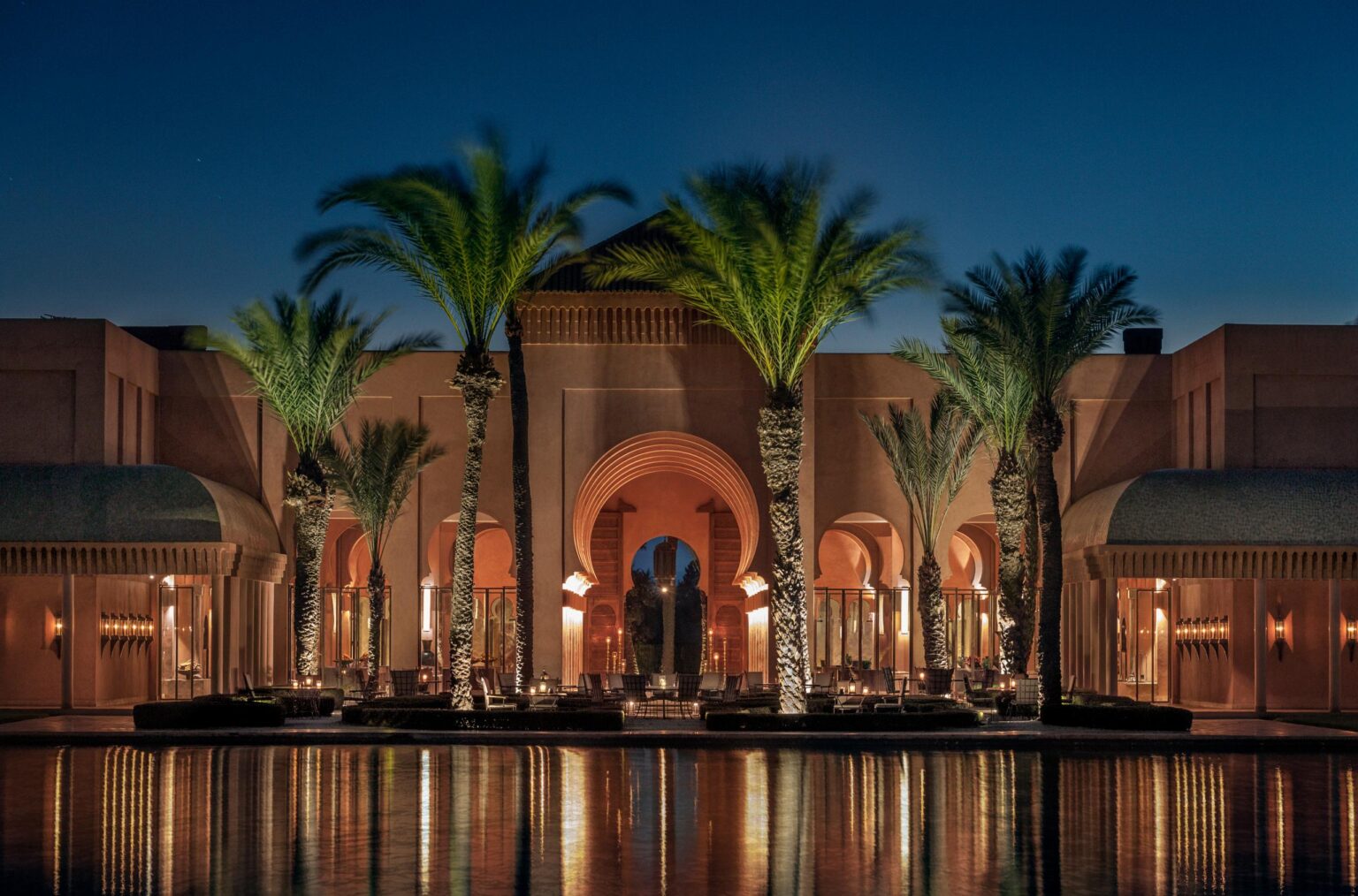At a Glance
- Aman and Mandarin Oriental are redefining Morocco’s ultra-luxury travel with premium, immersive guest experiences.
- High-spending visitors from Europe, the Gulf, and North America are driving Morocco’s luxury tourism surge.
- Luxury-led growth is reshaping Morocco’s infrastructure, real estate, and culinary scene for upscale travellers.
Luxury travel Morocco is going through a transformation. High-profile brands like Aman and Mandarin Oriental are not just opening resorts—they’re resetting standards for ultra-luxury hotels, guest experience, and experiential tourism in Marrakech, Rabat, Tangier and beyond.
Redefining ultra-luxury resorts in Morocco
Aman, with its minimalist elegance and Asian design heritage, contrasts sharply with Mandarin Oriental’s fusion of Eastern tradition and global service benchmarks.
These two marquee names are pushing Morocco toward a premium tourism paradigm—one defined by elevated amenities, bespoke wellness offers, refined gastronomy, and private, immersive stays.
Take Amanjena in Marrakech: its scheduled temporary closure for a high-end hotel refurbishment—revamping guest suites, culinary venues, and cultural-programming—is more than renovation.
It’s a strategic move intended to reset expectations for what affluent travellers demand: higher Average Daily Rates (ADRs), deeper value per stay, and rarefied exclusivity.
Similarly, Mandarin Oriental’s anniversary upgrades and curated experiences signal confidence in luxury tourism recovery in Morocco.

Tourism metrics & high-spending segments
Morocco has logged record tourist arrivals and revenue growth in 2024; the momentum has continued steadily into 2025. Ultra-luxury resorts are among the biggest beneficiaries.
What’s notable is not just visitor volume, but “visitor value” — high-spending Europeans, Gulf nationals, and affluent North Americans are booking longer stays, private excursions, wellness retreats, and multi-destination itineraries.
Experiential travel—bespoke stays, immersive local culture, curated tours—now sits at the very top of what luxury travellers search for.
These trends justify steeper room rates, premium pricing, and a shift from mass tourism to a “luxury tourism recovery” model anchored in quality over quantity.
Infrastructure, real estate & culinary development
Brand-led luxury growth ripples beyond resort walls. Airports, roads, high-speed rail links, and local transit are under pressure to modernize—or expand entirely—to facilitate luxury itineraries across Marrakech, Casablanca, Tangier and Rabat.
Such connectivity improvements are now among the most searched topics tied to “luxury travel Morocco.”
On the ground, local artisans, textile makers, private guides, and boutique real-estate developers are seeing demand increase, raising property values in villa markets and upscale real estate near resort clusters.
Gastronomy, too, is rising: fine dining outlets, regional food traditions, and high-end culinary experiences are essential parts of what luxury travellers expect and what drives search traffic around Morocco’s food culture.

Risks, sustainability & local integration
Pushing the ultra-luxury envelope carries risks. Rising land values and service costs can marginalize local operators unless global brands integrate local culture—architecture, cuisine, craftsmanship—in their development.
Oversupply of luxury hotels without distinctive identity risks diluting the uniqueness that makes Morocco’s tourism search queries compelling.
For sustainable luxury tourism, Moroccan policy needs a balance: community benefits, environmental sustainability, inclusive value chains, and smart regulation.
All are increasingly part of what luxury travellers care about—and what search engines reward when people look for “sustainable hotels in Marrakech” or “ethical luxury travel Morocco.”
Morocco’s global position: Premiumization in practice
What does all this mean for Morocco’s place in the global luxury travel marketplace? The Aman and Mandarin Oriental effect is both superficial—in destination prestige—and profoundly substantive—in travel receipts per visitor.
If Marrakech, Rabat, Tangier continue attracting top-tier investment, and if visa policies, air routes, and transport connectivity keep improving, Morocco is poised to attract more affluent travellers per trip, not just more travellers overall.
That premiumization of tourism revenue is essential as Morocco seeks to compete with Mediterranean and North African peers. For luxury travel Morocco, the future isn’t just growth—it’s about elevating value, sustainability, and experience.





